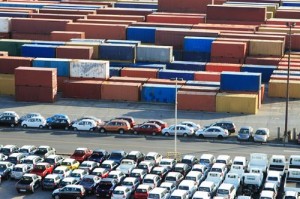
Associate Professor of Transportation & Logistics at American Public University
What’s the best way to transfer goods from one point to the other? There are many different modes of transport, each presenting advantages as well as shortcomings. Finding the best answer for each situation is part of the art of the transportation and logistics professional.
The main dimensions that differentiate modes of transport include speed, costs, flexibility, convenience, security, and accessibility. Currently, the main modes of transport are road, rail, sea, and air transport. Each of these requires different vessels to carry the goods.
Different commodities may demand different modes of transport. For instance, the transportation of gold may require high levels of security while that of horticultural products requires higher speeds.
Road/Truck Transport
Road transport is the most commonly used mode of transport in the world today. In the transportation of goods by road, trucks are the most commonly used vessels. Road transport offers several advantages over other modes of transport including flexibility, low cost, and access to many destinations.
However, truck transport is problematic when very long distances are involved. In addition, the use of road transport is not secure and can be inconvenient when speed is of the essence.
Rail Transport
Rail transport allows the transportation of heavy or bulky goods over long distances while incurring minimum costs. Railways usually connect several countries, making rail transport an appropriate way of transporting goods across borders.
However, the use of railway transport is slow and inflexible. Recent advancements in technology have solved the problem of speed with the invention of electric trains.
Ship Transport
Cargo ships are the primary means of international transport, able to carry large volumes of goods by water. The size and capacity of ships has increased over time. Modern loading technologies have simplified the ship transport process. Ship transportation has supported the increase in international trade among different nations (Peoples and Bailey 341).
Air Transport
Air transport is the fastest process, and it provides the best convenience. However, due to the high cost involved in this mode, it is not commonly used in the transportation of large volumes of cargo. In the few instances when it is used, the goods are in small quantities and carrying a value high enough to compensate the cost involved in their transportation.
Despite the high costs, air transport presents one of the most important aspects of international trade and complements other modes through its high speed and convenience (Peoples and Bailey 341).
About the Author
Dr. Keith A. Wade is an Associate Professor of Transportation & Logistics with American Public University. He teaches courses in Supply Chain and Logistics Management. Prior to working full time in teaching, Dr. Wade worked in the Logistics field for over 15 years. He was most recent a Director of Supply Chain & Logistics Management for Ford Motor Company in which he managed logistics responsibilities all over the world. Dr. Wade earned a PhD from Michigan State University in Supply Chain Management, an MBA from the University of Detroit, and a BSBA from Oakland University. Dr. Wade is a Six Sigma Black Belt.

Comments are closed.